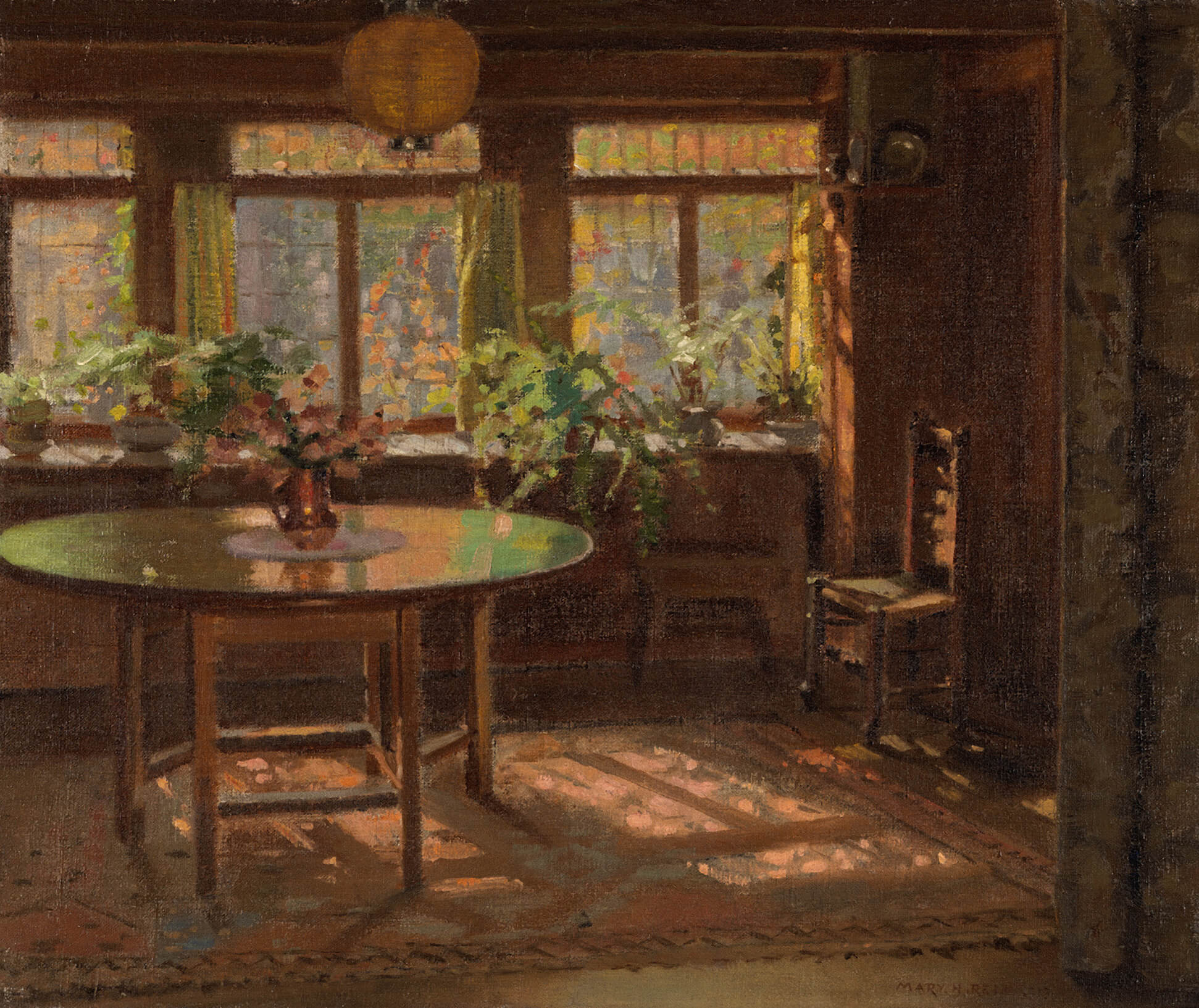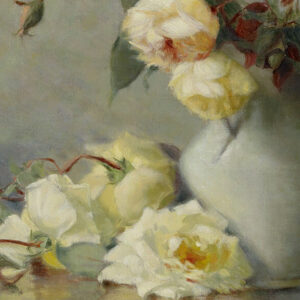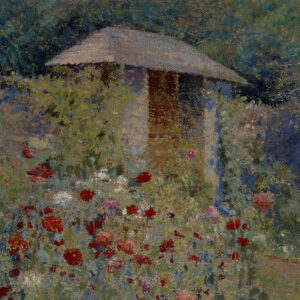Morning Sunshine 1913

Mary Hiester Reid, Morning Sunshine, 1913
Oil on canvas, 63.5 x 76.4 cm
National Gallery of Canada, Ottawa
This scene depicts the dining room of Hiester Reid’s home, Upland Cottage, in Wychwood Park, Toronto. This artwork speaks particularly to her Aesthetic tastes, and especially the exploration of the culture and goods of “the exotic East,” strategies that she used in earlier works such as Chrysanthemums: A Japanese Arrangement, c.1895, and A Fireside, 1912. An example of this recurring trend is demonstrated by the artist’s incorporation of the Chinese lantern that hangs from the top of the picture plane. The stylistic sophistication of this painting was recognized by the National Gallery of Canada, which purchased it in 1913 for $300 and included it in the 1913 Royal Canadian Academy of Arts exhibition. The gallery also sent it overseas for display in the Canadian art section of the British Empire Exhibition at Wembley in 1924.
Using an incredibly bright palette and broad brush strokes to define the light falling on the flowers and the carpet, Hiester Reid portrays an impression of her lived interior. The work shows a sparsely furnished room filled with light that spills into the space through a wall of windows. The light emphasizes a chair set off to the right side and a glass table graced by a copper vessel filled with flowers. Her signing this work in the lower right corner as Mary H. Reid, as opposed to the more traditional married version of her name, Mrs. G. Reid, indicates that she considered this work an artistic accomplishment.
By 1913 the painting strategies Hiester Reid used in this work had become commonplace among Canadian artists. But by the 1920s those strategies were challenged by the colourful, boldly defined “wilderness canvases” of the Group of Seven, such as Lawren Harris (1885–1970) and J.E.H. MacDonald (1873–1932). In the case of Hiester Reid’s work, some critics described it as having the “old charm of line and softness,” suggesting that her previously innovative strategies were no longer as influential.

 About the Author
About the Author
 More Online Art Books
More Online Art Books
 Acknowledgements
Acknowledgements